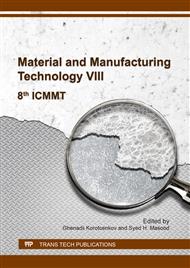p.51
p.59
p.64
p.69
p.79
p.84
p.90
p.95
p.101
Photocatalytic Application of Graphene-Based TiO2 Nanocomposite
Abstract:
Titanium dioxide (TiO2) is one of the most well known photocatalytic materials. However, TiO2 is only photoactive to ultraviolet (UV) light, and the lifetime of the electron-hole pair recombination is too short. In this work, TiO2 anatase nanotubes with an energy band gap of 3.01 eV and specific surface area of 112.46 m2/g were synthesized via hydrothermal method. The results showed that, by incorporating graphene oxide (XGO) and reduced graphene oxide (RGO), the photodegradation efficiency could be enhanced by increasing electron lifetime and charge carrier separation, as well as narrowing the energy band gap. The examination of photodegradation activity under UVC irradiation indicated that a maximum photodegradation efficiency was achieved with TiO2-XGO nanocomposite due to its high specific surface area and strong hydrophilic property.
Info:
Periodical:
Pages:
79-83
Citation:
Online since:
October 2017
Keywords:
Price:
Сopyright:
© 2017 Trans Tech Publications Ltd. All Rights Reserved
Share:
Citation:


